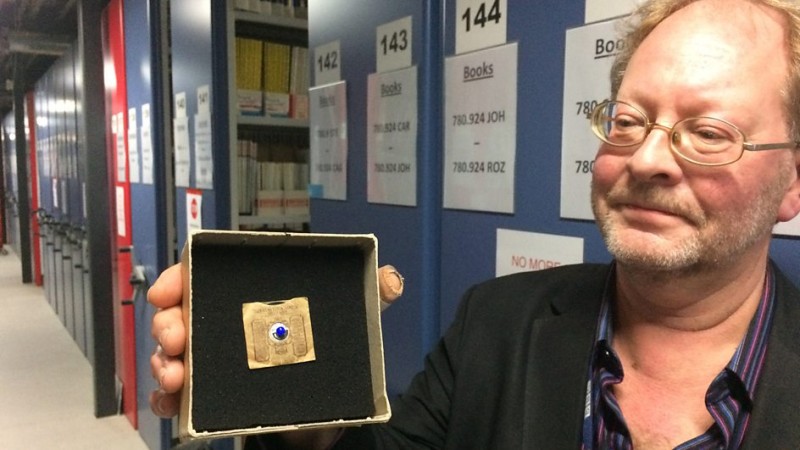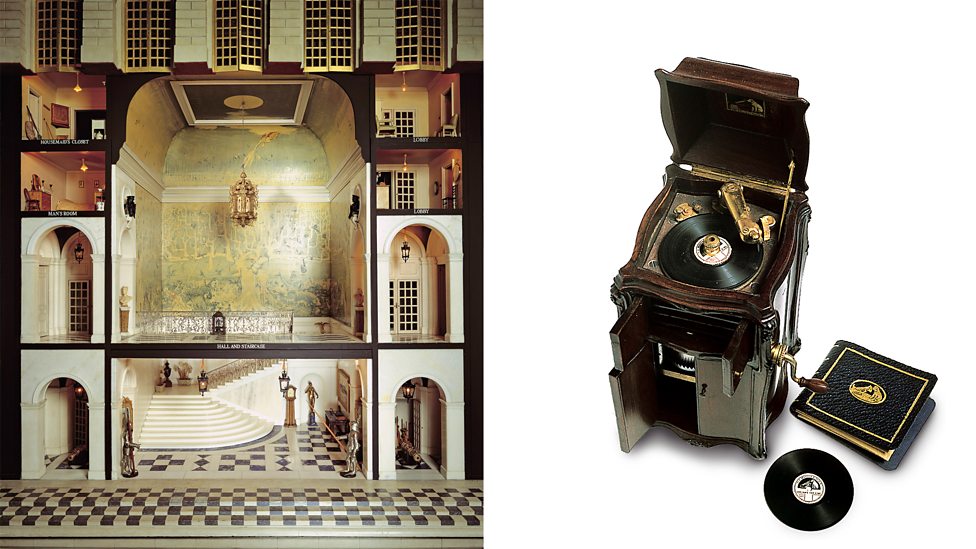BBC Radio 3 Late Junction’s Verity Sharp and the co-founder of Finders Keepers Records, Andy Votel, disappeared into the BBC Archives in search of obscure vinyl recordings and rare oddities. They found a surprising, tiny delight…
This beautiful little record measures 3.5 cm in diameter and sits in a tiny printed sleeve, perfectly pressed on the HMV record label, and no bigger than the palm of your hand.
It’s stored in the BBC archive at Perivale, where most of the BBC’s archives are kept, carefully filed away in a special collection of rarities.
It arrived at the BBC over 90 years ago. Rumour has it that it was sent to the BBC by the Royal Family no less, who thought the BBC should have a copy. Whether this is information is true or not has been lost in the mists of time, but what is known is that the disc has a fitting royal connection: the music on the record is "God Save the King".
Today, most vinyl is made of Polyvinyl Chloride (PVC) resin, but in the early days, various materials were used to make records, including hard rubber. This little record, pressed in the 1920s, is made from ‘shellac’.
Shellac, a natural resin, was made into a compound that, until the 1940s, was often used in the production of 78 rpm discs. Advances in plastics have now rendered it obsolete as a moulding compound for records.

Listen BBC music researcher Nigel Griffiths on the moment the record was shown to the Queen.
The Royal connection
Of course a tiny playable record needs a teeny gramophone player to play it on, and this is where the Royal connection comes in.
In 1920 plans were made for a special dolls' house to be made for Queen Mary. Inside it would contain luxury items made in miniature size. By the end of 1924 The Queen’s Dolls’ House was complete. It had running water, electricity as well as extensive wardrobe of clothing and accessories by the likes of Louis Vuitton and Cartier.
Everything inside the house was one twelfth the size of its real life equivalent, including a specially created gramophone.
This gramophone was capable of playing the six bespoke recordings from the His Master’s Voice record label (HMV). Among the titles recorded were "Rule Britannia" and "God Save the King", sung by Peter Dawson. The miniature discs were made at the company's studio at Hayes, Middlesex, on 26 January 1923.
When the Dolls' House was exhibited as part of the British Empire Exhibition in Wembley in 1924, HMV pressed replicas of the "God Save the King" disc. One of these is the copy held in the BBC archives. It can still be played today.

So is this the smallest playable record in the world?
“It most certainly was at the time. I can’t imagine anyone has made anything smaller. It played at 78rpm,” says BBC music researcher Nigel Griffiths.
The Guinness Book of Records confirms that “Six titles of 33.3mm/1 5/16th in diameter were recorded on mini-vinyl records by HMV's studio at Hayes, Middx on 26 January 1923 for Queen Mary's Dolls' House. Completely functional, some 92,000 of these miniature records were pressed including 35,000 of God Save The King”
The BBC’s mini gem – kept safe in the archives – is one of those. However in the size stakes it does have competition, including a comedy record… and a “Hip Pocket” record no less…
You can still see Queen Mary’s Dolls' House complete with the mini-gramophone and tiny record at Windsor Castle.
Courtesy of BBC Radio 3, Late Junction



